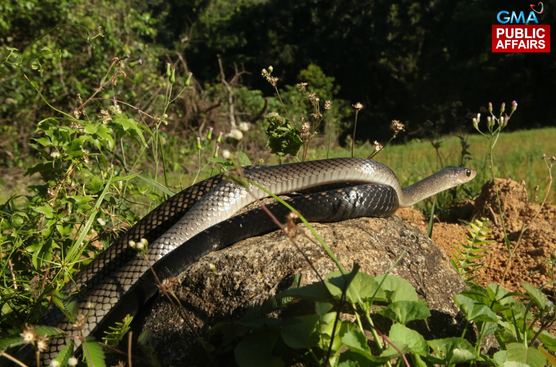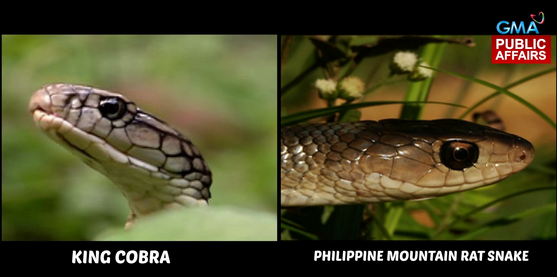‘Born to be Wild’ finds a new record of snake species in Camiguin Norte
"Born to be Wild" airs every Sunday, 9:45 AM, on GMA channel. For more information, follow the show on Facebook and Twitter. For updates on your favorite documentaries, follow also the official Facebook page of GMA Public Affairs.
There’s a snake that spells death to the locals of Camiguin Norte, one of the Babuyan group of islands in the Luzon Strait.
They call it the “Karasain,” and a bite from this snake will result to instant death, according to residents.

Doc Nielsen Donato searched for this allegedly “deadly” snake last May, and suspected this may be a King Cobra (Ophiophagus hannah), the longest venomous snake in the world. The King cobra is notorious for its ability to stand for up to a third of its body length, and according to University of California’s Department of Medical Toxicology, is known to deliver multiple bites in a single attack.
However, to Doc Nielsen’s surprise, the “Karasain” he found turned out to be a Philippine Mountain Rat Snake (Ptyas luzonensis). This snake may have a physical resemblance to the deadly cobra, but it is not venomous.
“Nakita ko iyong bands niya, lalong tumatak sa isip ko na this might be the king cobra. Pero pag-grab ko palang, iba iyong behavior niya. Itong kinatatakutan nilang Karasain ay hindi cobra. Dapat kasi ay lumalapad na ang leeg nito kung cobra ito,” he said.

The King Cobra can spread its neck ribs to form a flattened, widened hood. The mountain rat snake, however, does not possess this ability.
Dr. Arvin Diesmos, head of the Herpetology Department in the National Museum of the Philippines, confirmed that this is the first record of this species in the Babuyan group of islands.
“Iyong inyong record is the first, nakadagdag ng bagong information ang inyong lakad doon. It’s a new record for that island group. It’s very important because it widens their (the species) distribution range,” Dr. Diesmos said.
According to the International Union for Conservation of Nature or IUCN, the mountain rat snake is generally found in lowland tropical forests, and appears to be tolerant of a wide variety of habitats.
During the day, this species is usually found on the forest floor, while at night, this animal is more often encountered in vegetation near to water. This species is threatened by general deforestation resulting from land conversion and is heavily persecuted because it is often mistakenly identified as a venomous cobra.—Annalyn Ardona/BMS



